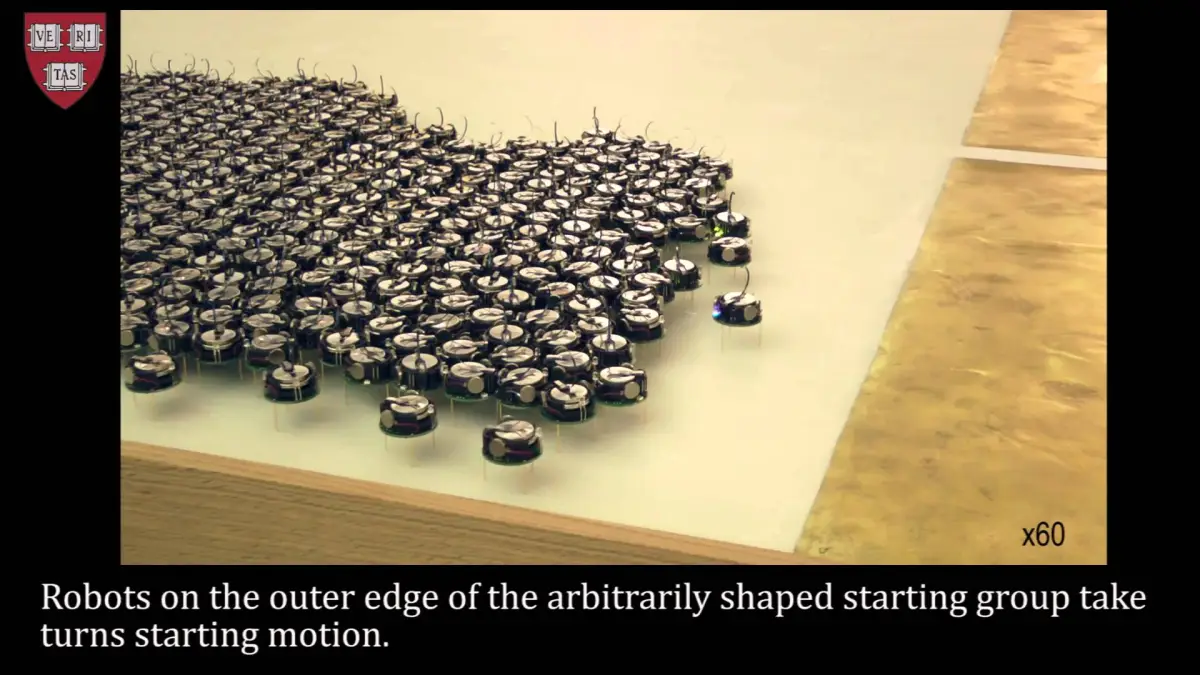There are plenty of examples in the animal kingdom of a group working together to accomplish a single task, so naturally this is a behavior scientists are trying to replicate in robots. Harvard University’s Kilobots (one letter away from K-I-L-L-B-O-T-S, I’m on to you, Harvard) can collectively and spontaneously replicate shapes. Watch them in action. Terrifying, nightmarish action.
Killbots Kilobots themselves aren’t capable of much. They’re small, about the size of a coin, and move by vibrating similarly to how your phone scoots across the table as the ringer vibrates. They communicate with one another through infrared light, which limits them to only being able to talk to their immediate neighbors.
Harvard built a swarm of 1024 Kilobots, and by introducing a small number of “seed robots” to the mix, they group can self assemble into pre-programmed patterns. The signal of the pattern starts with the seed robots and then travels out through the group. Each Kilobot can then determine if it’s inside the border of the shape. If it’s not inside the shape it scoots around the edge of the swarm until it is.
If, like me, the idea of an intelligent swarm of tiny robots frightens you, take solace in the knowledge that the Kilobots take about 12 hours to complete a shape, and even then the final product tends to be slightly distorted because the clumsy little bots have a hard time stopping without bumping into their neighbor.
(via Nature, image via Harvard University)
- Battlesuit Runner helps you train for the coming robot apocalypse
- German researchers built a robotic ape, because what’s the worse that could happen?
- This survival moped looks like it’ll come in handy
Are you following The Mary Sue on Twitter, Facebook, Tumblr, Instagram, & Google +?









Published: Aug 15, 2014 12:49 pm